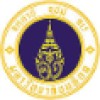
Traumatic Characteristics of the Forensic Cases Admitted to Emergency Department and Errors in the...
EmergenciesTraumaObjectives: to detect the mistakes and deficiencies of the forensic reports which was written and to detect the injury characteristics of the forensic cases applied to emergency service of a tertiary hospital.

Impact of a Triage Liaison Physician
EmergenciesTriageDue to an increasing number of patients admitted in emergency departments, many patients cannot be evaluated immediately after their admission. The function of "triage liaison physician" was introduced in Spring 2015. The objective of this study is to evaluate the impact of this new function on patients' flow in the ED.

Ear Temperature as Predictor of Rectal Temperature Measured With Modern Devices in the Emergency...
FeverEar thermometers are often requested to be used rather than rectal thermometer (gold standard) for measuring the body temperature, as this method is faster and more user friendly. Former ear thermometers did not meet the required standards of accuracy for clinical use. However, a new generation of ear thermometers have been developed and widely used in the Emergency departments in Denmark. The devices have only been evaluated in two studies on adult populations, with conflicting results. This cross-sectional study will examine patients by measuring both ear and rectal temperature in the same patient at the same time on admission to an emergency department, to evaluate if temperature measured in the ear can be used as the standard temperature measurement.

Emergency Thoracic Ultrasound and Clinical Risk Management
Chest DisordersClinical risk assessment and management is mostly relevant in emergency. Thoracic ultrasound (TUS) has been proposed as an easy-option replacement for chest X-ray (CXR) in Emergency diagnosis of pneumonia, pleural effusion and pneumothorax. Investigators investigated CXR "unforeseen diagnosis", provided by TUS, exploring usefulness and sustainability of telementoring aimed at the management of clinical risk. This observational report includes a period of six months with a proactive concurrent adjunctive telementoring in TUS diagnosis using freely available smartphone applications for the transfer of images and movies.

Emergency Department Cardiac Ultrasound
Chest PainDyspneaThis is a prospective observational study evaluating the diagnostic utility of cardiac ultrasound in patients who present to the emergency department with undifferentiated chest pain or shortness of breath. Emergency department providers will be interviewed before and after the completion of a cardiac ultrasound to determine if the ultrasound resulted in any changes in management. Other outcomes include determination of incidence of unexpected findings.

Risk Factors of the Revisit of the Adult Heart Failure Patients in Emergency Department Siriraj...
Congestive Heart FailureRenal InsufficiencyTo identify the risk factors of the revisit of the adult HF patients in emergency department.

Utility of the History and Physical Exam in the Emergency Department
Abdominal PainBack Pain3 moreThe study is trying to prove that the history and physical exam (H&P) in the emergency department is the most important tool in exam of patients. The investigator is attempting to correlate the time of the H&P of residents and attendings to the accuracy of diagnosis.

Use of Defibrillator Information in the Emergency Department
Congestive Heart FailureMedical DeviceThis is a study to determine the feasibility of obtaining information stored in existing Medtronic internal defibrillators in patients who present to the Emergency Department(ED) for any reason. In addition, the study will determine if this information is useful to the ED physician in managing the patient's care, specifically as it relates to heart failure.

The Utility of Performing Brain CT Scan in Non Trauma Patients at the Pediatric Emergency Unit
ConvulsionsIncreased Intracraneal PressurePediatric patients are admitted to the emergency room for diverse causes, beside trauma, patients can present with convulsions, suspicion of brain tumor or increased intracranial pressure. In most of the cases a brain CT is performed even before physical examination by a skilled neurologist. The amount of radiation that the children are exposed is equivalent to 100 plain chest X rays. The purpose of this tudy is to examinate in a retrospective study what were the indications for CT study and what was the incidence of relevant abnormal findings that required emergency intervention or referral.

Hemolysis in Blood Samples in the ER
HemolysisEmergency Service3 moreIn this study, we aim to identify risk factors for hemolysis in blood samples drawn in the ED.
